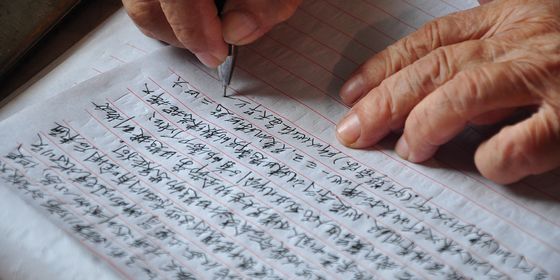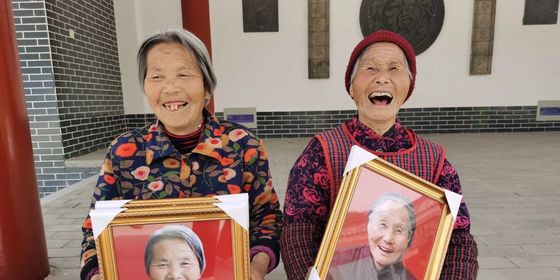Behind the repetitive choreography and thumping beats, middle-aged square dancers in China are the new frontier in marketing
The term dama, referring to middle-aged women, has been around for a long time. They have brought us a modern-day Gold Rush, the concept of dama fans, and, of course, the infamous “square dance” (referring to dancing in public squares, not the American barnyard style of dance).
Dancing to ear-piercing music played through a loudspeaker in squares, plazas, public parks, the front of malls, the highway, and any other reasonably open space in cities, the dama, sometimes referred to as “dancing grannies” (though they include a few men), are a routine part of urban Chinese life. Though many people have complained that the dancing dama are a public nuisance and the Chinese government has tried to regulate noise levels, timing, and even choreography of square dancing, the zeal of dama seems to be unstoppable. Hence, naturally, they become a lucrative new frontier for marketers wishing to tap into their unflappable enthusiasm, disposable income, and sheer numbers.
The size and the spending power of dancing dama
Let’s put aside the stereotypes of unflattering uniforms, tacky music, and repetitive choreography for a while, and learn something new about such a routine exercise. According to “Report on Chinese Square Dance Industry,” released in 2015 by Fang Hui, the founder of Darfoo, an entrepreneurial team targeting the square-dancing dama, there are over 2 million square dance teachers in China and 100 million square dancers, and behind them is 500 to 600 million population of the middle-aged-to-elderly which is regarded as target audience by entrepreneurs in this industry. A supply chain with huge market potential has already emerged.
These square dancing dama are often part of a well-organized subculture, a society formed of a number of separate dance groups with impeccable organization. They dance together every day and usually communicate with each other via WeChat and QQ group chats. In another article, Fang indicated that statistics show that there are over 100 national-level dama WeChat and QQ groups and over 600 city-level groups across China. Members are quite active in these WeChat and QQ groups, which are used for organizing practice sessions and competitions, share hackneyed inspirational articles, and post pictures, videos, and other notifications.
When these dama gather together, they dance, talk, and spend money. Unsurprisingly, dance clothes, dance shoes, music players, and loudspeakers are the most popular products among this particular consumer group. According to Fang’s report, size of the dancing clothes and loudspeakers market has already reached over 2 billion RMB annually; the health product market, which targets a demographic similar to the dama, has already reached over 200 billion RMB annually. And in the areas like domestic consumption, real estate, financial service, tourism and education, these dama also have a say, since many of them control the finance in the family.
The internet these days is full of stories of customer-relations managers from banks who join square-dancing groups to get close to those dama, then successfully sold financial products worth hundreds of thousands to these new acquaintances.
The square dance competition and off-line promotion activites
Another marketing opportunity comes from the many kinds of square dance competitions held across China each year, which could attract tens to hundreds of dance teams to participate. By paying a fee, a corporation can get their name attached to these competitions and become known across all dama-dom. They can also cooperate with the teams directly, such as by donating dance clothes that they ask the teams to wear during competition, the brand logo prominently displayed. The effects can be instantaneous. Recently, there was news that a dancing dama took part in the competition sponsored by a real estate company and then bought a house the very next day.
Even movie stars have found square dance to be an effective vehicle of promotion. Deng Chao and Sun Li, a celebrity couple, chose to dance with 400 dama at a press conference to promote their movie Devil and Angel, and probably got more headlines than a regular photo op (or than they perhaps deserved).
The team behind the promotion of Jackie Chan’s new movie Kung Fu Yoga, which will be released this month, also turned to dama by holding a Kung Fu Yoga-themed square dance competition. The competion lasted a whopping 45 days with many different rounds in various regions, and has attracted around 200 teams, with the final winning team getting the opportunity to dance together with Jackie Chan.
Viral videos and online celebrities
High-quality content attracts attention, and attention in turn means money. This golden rule in the cultural industry also works in the square dance field. Videos of interesting, creative, or high-quality dances are not only being shared by among the dama in those aforementioned social media groups, but can also easily go viral. In 2015, a video of a square-dancing flash mob to the music of popular idol group TFBoys at West Lake Square in Hangzhou attracted 3.7 million views, and the hashtag created for the event was viewed 1.68 million times.
It’s already no surprise that being an online celebrity is lucrative, but what many don’t expect that apart from beautiful girls with V-shaped face, internet stardom is also open to square dance masters. Young people have their idols and the middle-aged are no different. The picture below shows enthusiastic fans in Luoyang, Henan province, hold signs and flowers as they wait for their favorite internet-famous square-dance teachers and lead dancers to arrive at a meet-and-greet event.
Websites, apps and other internet products
Marketers are continuing to look for the most effective channels to tap into the square-dance market. Along with the development of the internet, they have created different platforms to launch content and allowed dama to communicate, from websites, online forums, mobile sites, apps to recent WeChat accounts. Fang listed a few of these products in a recent article: In 2011, Tangdou Square Dancing, a video and music-sharing website for square dancers, was launched; in 2012, aiwudao.com, another video-sharing platform, launched its BBS version; in 2014, Qiaqia Square Dancing developed its content-sharing app; in 2015, Dafu Square Dancing started its hardware project and Galloping Age set up an WeChat Official Account; in 2016, the Choreographer Center launched User and Teacher version of 1758 Square Dancing, a platform for online square-dancing instruction…
Numbers can make things much clearer. Take Tangdou Square Dancing as an example, so far its has more than 2.5 million daily active users, who spend 30 minutes on the site per day on average. Its videos are viewed around 300 million times monthly.
However, there are still some obstacles to overcome to fully develop this market. The penetration rate of smartphones among the middle aged and elderly is still relatively low; high-level dancing choreographers, leading dancers and high-quality music are still lacking. But at least, next time when you encounter with a group of dancing dama in a square near your home, you should realize that that’s a bundle of money dancing there!
Cover image from mop.com












